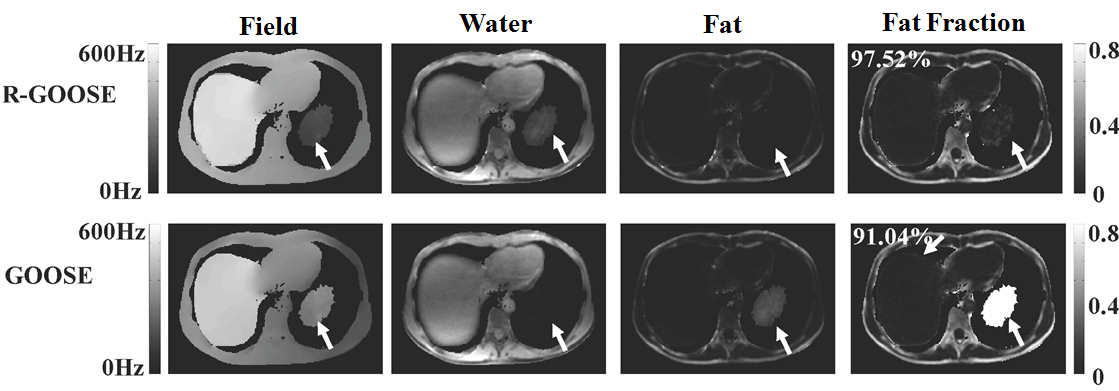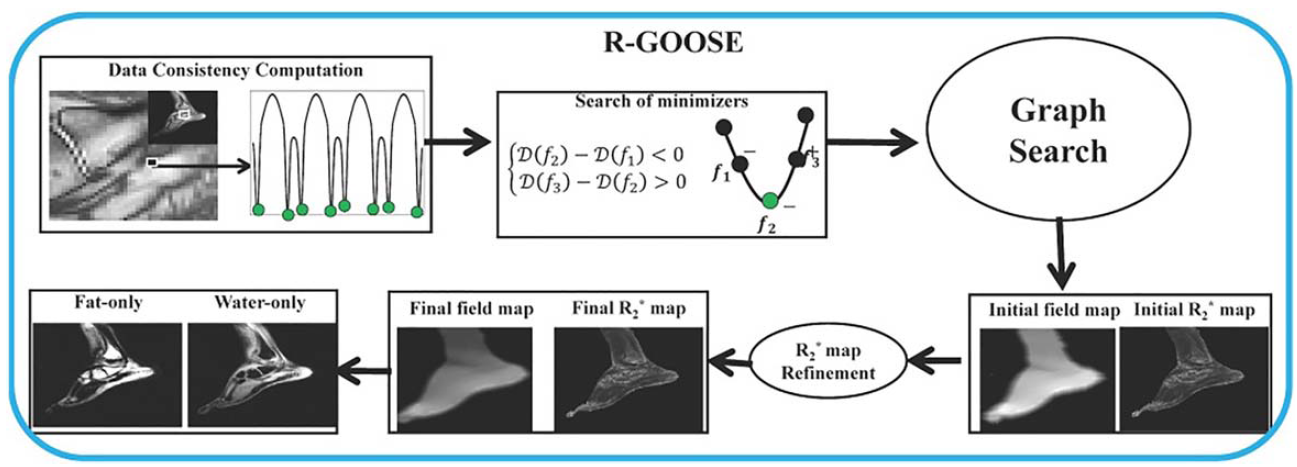R-GOOSE
A New Non-equidistant Graph Optimization Framework for Rapid 3D Fat-Water Decomposition.
A new non-equidistant graph search model for fat water decomposition is introduced to reduce the computational complexity by an order of magnitude, while still inheriting the global optimality of GOOSE. In particular, field map estimation is formulated as a 3D optimization problem, where the global criterion is the sum of the voxel independent maximum likelihood measurement and a smoothness regularization penalty term. A fast discrete pixel-by-pixel search is performed to identify the local minima of the voxel independent likelihood measurement at each pixel, then the solutions are restricted in the set of local minima. The smoothenss regularized formulation is converted to an optimal surface estimation problem a non-equidistant graph.
Since the new formulation significantly reduces the graph layers compared to GOOSE, it provides an order of magnitude reduction in computational complexity and memory demand. Hence, the new algorithms are readily applicable to large scale 3D fat–water imaging applications. Quantitative comparisons between GOOSE and R-GOOSE are performed using datasets from 2012 ISMRM Challenge.
Figure 1: Information flow in R-GOOSE.

Figure 2: Qualitative comparisons on a liver dataset (2012 ISMRM Challenge dataset #12). R-GOOSE resolved the fat-water swap in GOOSE.
Table 1: Quantitative comparison of betweeen GOOSE and R-GOOSE.
Acknowledgement: The authors would also like to thank the committee of 2012 ISMRM Challenge for providing data and codes to test our algorithm.
Reference:
-
C. Cui, X. Wu, J. Newell, M. Jacob, A Rapid 3D Fat–Water Decomposition Method Using GlObally Optimal Surface Estimation (R-GOOSE). Magnetic Resonance in Medicine, in press.


